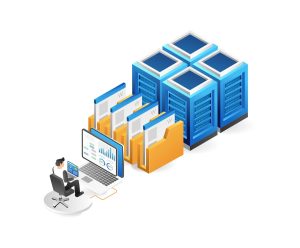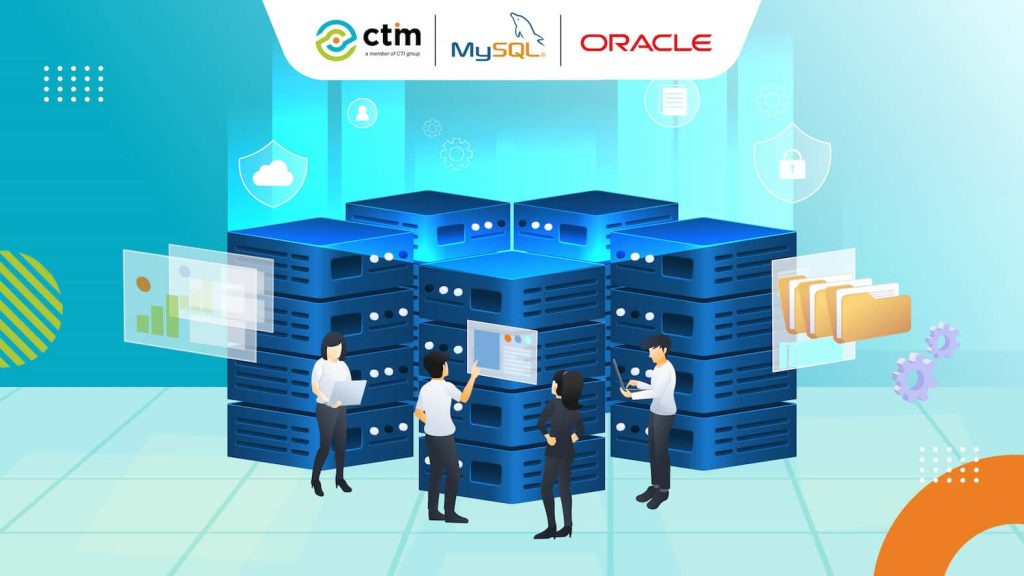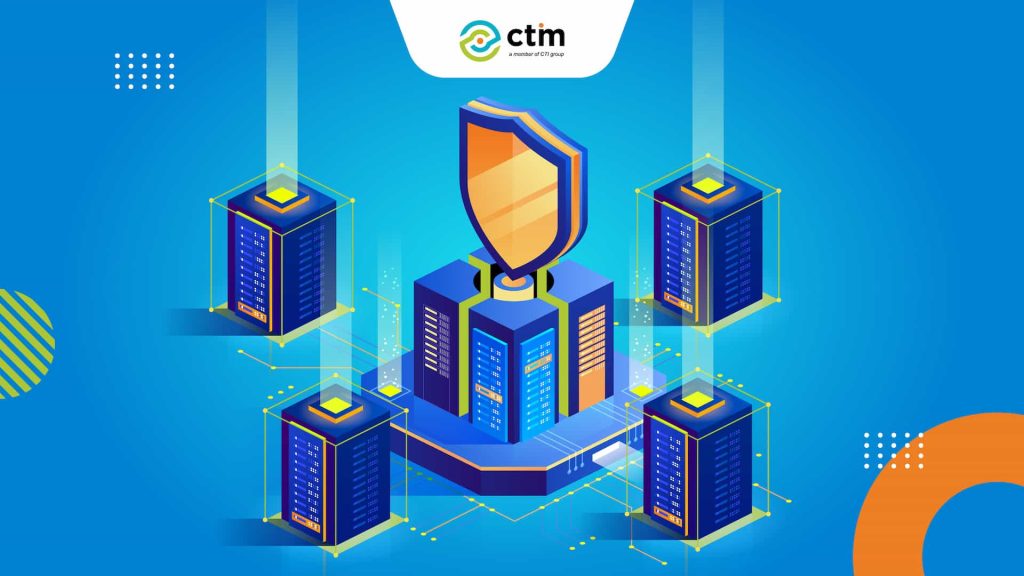Businesses today operate in a world overflowing with data, where agility, performance, and security are not optional but essential. IDC once predicted that global data creation would leap from 45 zettabytes to 143 zettabytes in just five years. By 2025, that milestone has already been surpassed, with data volumes growing faster than anyone anticipated and stretching traditional database systems to their limits.
This mounting pressure has sparked a shift in how organizations think about managing their most critical asset. Increasingly, attention is turning to Database-as-a-Service, or DBaaS. But can DBaaS truly rise to the challenge of a data-driven, cloud-first world? Find out in today’s article.
What is a Database-as-a-service?
Database-as-a-Service, or DBaaS, is a cloud-based service model where a third-party provider delivers and manages database software and infrastructure on behalf of the user. Instead of installing, maintaining, and securing databases on local hardware, organizations access them through the cloud, typically via an online console or API.
How DBaaS Actually Works

At its core, DBaaS operates by hosting databases on a cloud provider’s infrastructure and making them accessible through a simple interface or API. Instead of worrying about servers, storage, or complex configurations, users request a database instance from the provider, which is automatically provisioned in minutes. Behind the scenes, the provider ensures the database runs on optimized hardware and software environments, taking care of updates, patches, and routine maintenance.
Beyond setup, DBaaS platforms continuously manage essential functions such as automated backups, scaling, high availability, and monitoring. This means databases can expand as workloads grow, recover quickly in case of failure, and maintain performance without manual intervention.
How DBaaS Differs from Traditional Management
While both approaches serve the same purpose of storing and managing data, the way they are delivered and maintained is fundamentally different. Here’s a side-by-side view:
| Aspect | Traditional Database Management | Database-as-a-Service (DBaaS) |
| Infrastructure | Runs on local servers and hardware | Runs on cloud provider infrastructure
|
| Setup | Manual installation and configuration | Automated provisioning through the cloud
|
| Maintenance | IT team manages patches and upgrades | Provider handles updates and maintenance
|
| Scalability | Limited, requires new hardware | Elastic, scales on demand |
| Availability | Relies on in-house backup systems | High availability with automated recovery
|
| Resources | Heavy IT involvement | Minimal IT overhead |
What Makes DBaaS the Smarter Choice
Instead of being limited by the traditional demands of hardware, maintenance, and time-consuming setup, DBaaS opens the door to a faster, more flexible approach. It removes barriers that once slowed down growth and gives businesses a simpler path to scale their database operations.
With that in mind, here are three core benefits that highlight why DBaaS has become such an essential choice for modern enterprises:
1. No Need for Onsite Hardware
Since DBaaS is hosted in the cloud, there is no need for organizations to invest in expensive physical servers or storage systems. This reduces capital expenditure and removes the burden of managing physical infrastructure, freeing IT teams to focus on strategy rather than upkeep.
2. Rapid Database Deployment
Provisioning a new database no longer requires days of setup and configuration. With DBaaS, instances can be created within minutes, enabling teams to launch applications or projects much faster. This speed directly supports business agility and shortens time-to-market.
3. Future-Ready Data Operations
DBaaS platforms are designed to grow and evolve alongside business needs, providing built-in scalability, automated updates, and continuous improvements. This ensures that organizations are prepared for the rising demands of tomorrow’s data landscape without constant reinvestment or technical overhauls.
How Cloud Computing Powers DBaaS
Cloud computing provides the foundation that makes Database-as-a-Service possible. By delivering computing resources over the internet, the cloud removes the need for businesses to invest in and manage their own database infrastructure. Storage, compute power, and networking are all pooled and delivered on demand, allowing databases to run in secure, scalable environments without the limits of physical hardware.
This model also brings flexibility that traditional systems cannot match. With cloud platforms, DBaaS can scale instantly as workloads grow, maintain high availability across regions, and integrate advanced tools such as automated backups and performance monitoring. In short, cloud computing transforms the database from a fixed asset into an elastic service that adapts seamlessly to business needs.
Also Read: Why Modern Businesses Are Shifting to Cloud Databases
Who Relies on DBaaS?
Database-as-a-Service has moved from being a niche option to a mainstream solution embraced across industries. Its appeal lies in reducing the burden of database management while unlocking the scalability and agility needed in today’s digital economy. From small startups to global enterprises, DBaaS has become the backbone of modern data strategies.
To see this in action, here are the types of organizations most often turning to DBaaS:
- Startups & SMBs: Gain enterprise-grade databases without heavy upfront costs.
- Enterprises: Simplify operations and support global-scale applications.
- E-commerce & Digital Platforms: Handle spikes in traffic with seamless scalability.
- Data-Driven Tams: Focus on analytics and insights instead of infrastructure.
- Developers & IT Teams: Launch projects faster with ready-to-use database environments.
Tips for Choosing the Right DBaaS

With so many providers and offerings in the market, choosing the right Database-as-a-Service can feel overwhelming. The right decision depends not just on technical features, but also on how well the service aligns with business goals, security requirements, and future growth plans. A thoughtful approach ensures that the chosen platform does more than manage data — it supports the broader strategy of the organization.
To make a confident choice, here are key factors to consider when evaluating DBaaS providers:
1. Performance and Scalability
Look for a platform that can handle current workloads while seamlessly scaling to support growth. Performance should remain consistent even during peak usage, ensuring that business operations run smoothly without bottlenecks.
2. Security and Compliance
Data protection is non-negotiable. The ideal DBaaS should provide robust encryption, access controls, and compliance certifications that match industry standards. This safeguards sensitive information and builds trust with customers.
3. Cost Structure and Flexibility
A good DBaaS provider offers transparent pricing that balances affordability with value. Pay-as-you-go models help avoid overprovisioning, while flexible tiers ensure that costs scale fairly with usage.
4. Integration and Ecosystem Support
The platform should integrate smoothly with existing tools, applications, and workflows. Wide ecosystem compatibility reduces friction, making it easier for teams to adopt and leverage the service.
5. Reliability and Support
High availability, disaster recovery, and responsive customer support are critical. The right provider ensures databases stay online and accessible, with expert help available whenever issues arise.
If you’re looking for a solution that blends the flexibility of open-source with the strength of enterprise-grade cloud, MySQL and Oracle Cloud stand out as the perfect choice. Together, they deliver a DBaaS built to be simple, scalable, and ready for the future.
MySQL & Oracle Cloud: The Perfect Pair for Today’s Data Demands
MySQL remains one of the world’s most trusted open-source databases, valued for its speed, simplicity, and cost-effectiveness. It powers everything from small web apps to enterprise-grade solutions, giving developers flexibility without the burden of heavy licensing costs.
Complementing this, Oracle Cloud brings enterprise-grade infrastructure with global scalability and built-in security. Designed for performance and reliability, it provides the foundation to run mission-critical workloads seamlessly across regions and at any scale.
Together, MySQL and Oracle Cloud form a DBaaS solution that blends familiarity with strength — a platform that is scalable, secure, and ready to meet the data challenges of today while preparing organizations for the opportunities of tomorrow.
Also Read: Oracle Cloud: Malaysia’s Key to Digital Transformation
Partner with CTM for a Smarter Data Future
If you’re ready to turn this vision into reality, CTM is here to help. As part of the CTI Group, Computrade Technology Malaysia (CTM) enables organizations to unlock the full potential of MySQL and Oracle Cloud with end-to-end support — from planning and deployment to optimization and beyond.
Reach out to us today and take the first step toward a smarter, more scalable, and future-ready database strategy.
Author: Danurdhara Suluh Prasasta
CTI Group Content Writer




